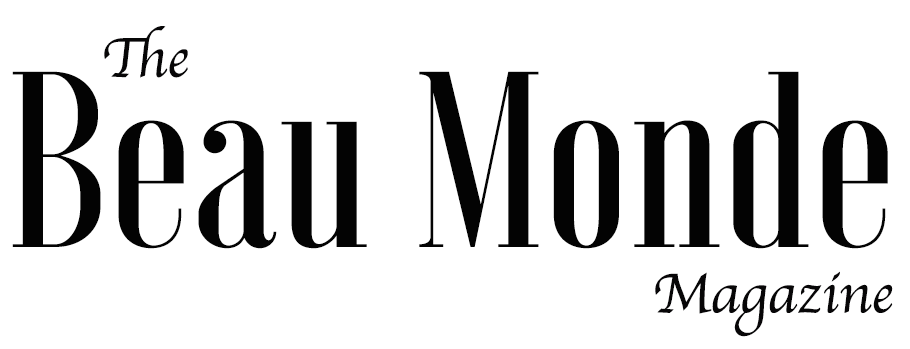
Elegance in Every Thread: Exploring the World of Ihab Jiryis
Ihab Jiryis is a visionary fashion designer celebrated for his ability to weave tradition, storytelling, and modern innovation into every creation. Hailing from the culturally rich region of Galilee, Jiryis’s designs reflect his deep connection to heritage while embracing a bold, forward-thinking approach to fashion. With an unwavering commitment to craftsmanship, sustainability, and authenticity, he has established himself as a trailblazer who sees clothing as more than just garments—it is art, identity, and a powerful form of self-expression. Through his work, Jiryis continues to push boundaries, creating pieces that resonate with meaning and inspire confidence in those who wear them.
(The Beau Monde Magazine): Can you tell us about your journey into the world of design? What inspired you to pursue this career?
(Ihab Jiryis): “Design entered my life as both a calling and an inevitable direction. From a young age, I was mesmerized by how clothing could communicate identity, status, and emotions. Growing up, I constantly found myself experimenting with fabrics, colors, and sketches. What inspired me most was the realization that clothing wasn’t just functional; it was storytelling, individuality, and art all rolled into one. What truly solidified my decision to pursue design as a career were the moments of connection I felt when I saw someone wearing something that made them feel confident, empowered, or understood. Fashion, for me, became less about trends and more about creating a dialogue between designer and wearer. This realization has remained a guiding force throughout my career.”

How did your upbringing and cultural influences shape your approach to design?
“As an Arab Palestinian who is living in the Galilee holy land, looking back, my upbringing and cultural background played a significant role in shaping my approach to design. My family valued craftsmanship, heritage, and attention to detail, and I was raised to see the beauty in tradition. I grew up surrounded by textiles, patterns, and techniques that told stories of my ancestors and their cultures—a legacy I carry into my own work. These influences taught me that design can be a bridge between the past and the future. I am always inspired by the challenge of merging traditional craftsmanship with modern innovation. This cultural duality has shaped me into a designer who respects history while pushing creative boundaries. Why is this important? Because it reminds us that our roots matter. Whether we realize it or not, our cultural experiences shape our design philosophies. For the reader, this may spark a reflection on the value of honoring one’s heritage while remaining open to new possibilities.”
Who were your biggest mentors or inspirations in the design world?
“No journey is solitary, and mine has been deeply influenced by mentors and design pioneers. Early in my career, I worked under a designer who taught me the importance of narrative in design. They showed me that every garment should have a story, and that the difference between good and extraordinary design lies in intention. I’ve also drawn immense inspiration from designers like Alexander McQueen, whose work seamlessly blended art, emotion, and technical prowess. McQueen’s ability to create pieces that felt alive with meaning taught me that fashion could be provocative and transformative. My mentors and inspirations have shown me the power of design to spark conversations and evoke emotions. For emerging designers, this serves as a reminder to seek out mentors and immerse themselves in the work of those who inspire them. Learning from others can accelerate personal growth and help refine your creative voice.”

What is your typical design process, from concept to final product?
“My design process is both structured and intuitive, blending research, experimentation, and storytelling. It begins with a question or idea—sometimes inspired by a cultural phenomenon, a personal experience, or even a material I’ve come across. I then dive into research to explore the historical, social, and emotional dimensions of the idea. Once I have a clear direction, I sketch. Sketching allows me to visualize the narrative I want to convey. From there, I experiment with materials, textures, and silhouettes, constantly refining my vision. Prototyping and sampling are the stages where I turn abstract ideas into tangible forms. Once the design feels cohesive, I finalize the piece, ensuring the craftsmanship and details align with my intended message. This process is a constant back-and-forth between creativity and critical thinking. And for you, the reader—whether you’re a designer or an enthusiast—it underscores the importance of patience, experimentation, and reflection in any creative pursuit.”
What are your thoughts on the future of design, particularly with the integration of technology like AI?
“The world of fashion is at a crossroads, and the integration of technology like artificial intelligence (AI) poses a question that could transform creativity as we know it: *are designers becoming obsolete?* This provocative question has been weighing heavily on my mind recently, as the industry evolves faster than ever. As someone deeply entrenched in the beautiful chaos of fashion, I’ve been reflecting on what these changes mean—not just for me as a designer, but for the future of an art form that merges imagination, culture, and functionality. After much contemplation, I’ve come to a series of realizations that I believe are vital not just to designers, but to anyone looking to understand where creativity and technology are headed.”

If you weren’t a designer, what career path do you think you would have pursued?
“If I weren’t a designer, I believe I would have pursued a career in psychology or anthropology. Why? Because fashion, at its core, is about people—understanding their identities, emotions, behaviors, and cultural contexts. The same curiosity that drives me to create garments reflecting human stories would likely have drawn me to study the human mind or societal structures. I’ve realized that the skills I’ve developed as a designer—empathy, storytelling, and the ability to synthesize disparate influences—are not confined to design itself. They are applicable across various disciplines. This reflection has helped me see that the essence of my career is not just about the act of designing but about the values driving that design. And for readers, particularly those aspiring to enter creative fields, this perspective is critical. Sometimes, we feel defined by the roles we occupy, but our talents and passions often transcend those boundaries. Exploring alternate paths can illuminate new facets of who we are and enrich the work we ultimately choose to pursue.”
How do you define success for yourself as a designer?
“Success in fashion design is often equated with external markers: runway shows, celebrity collaborations, or critical acclaim. While these milestones are undeniably significant, I’ve come to define success in a more personal and multidimensional way. For me, success revolves around three pillars: creative integrity, meaningful impact, and personal growth.
1. Creative Integrity: Staying authentic to my vision and values as a designer is paramount. Trends come and go, but the ability to create work that feels true to myself and resonates with others is a form of success that cannot be quantified.
2. Meaningful Impact: Whether it’s creating sustainable collections, promoting inclusivity, or telling underrepresented stories through fashion, I measure success by the positive change my designs can bring. When someone tells me that a garment I’ve created made them feel seen.”

What advice would you give to beginner designers looking to carve out a niche in the industry?
“One of the most profound lessons I’ve learned is that authenticity is the cornerstone of a successful fashion career. In a market flooded with trends and fast fashion, it is your individuality as a designer that will set you apart. Ask yourself: What are your values? What is your creative vision? What is the story you want to tell through your work? Finding your voice as a designer means digging deep into who you are and what drives your creativity. For instance, when I first started, I was tempted to follow what was “in” at the time—designs that I thought would sell or gain attention. But I quickly realized that chasing trends is a race you can never win. Instead, I turned inward and connected with what truly inspired me—my cultural heritage, my love for sustainability, and my passion for craftsmanship. Once I leaned into these core elements, my work began to resonate on a far deeper level with the people who mattered most: my ideal audience. Why is this important for you? Because authenticity builds trust with your audience. It gives your brand depth and meaning. People don’t just buy clothes—they buy into a story, a lifestyle, a belief system. When you design from a place of truth, you not only differentiate yourself but also create a foundation for lasting success.”
If you could design for any individual in the world, who would it be and why?
“When I first sat with this question, my instincts gravitated toward iconic figures—celebrities, global leaders, or cultural trailblazers. These individuals are often symbols of influence, and to design for someone with a far-reaching platform feels like a career-defining moment. But as I delved deeper, I realized this initial reaction revealed something important: *Designing for someone isn’t just about their fame; it’s about aligning with their narrative and amplifying their presence in the world. Fashion is a tool for storytelling, and as a designer, my role is to enhance the stories that matter to me through fabric, form, and vision. If I design for someone whose values resonate with mine, I have the opportunity to contribute to a narrative that extends beyond aesthetics—it becomes about impact, representation, and legacy. This realization helped me understand that the individual I choose isn’t just a client; they are a collaborator in shaping the future of our cultural landscape. For designers and readers alike, this is a powerful reminder: *The act of creation is never neutral—it carries intention, meaning, and influence.”
How do you incorporate sustainability into your design work?
“As a fashion designer, this question has become one of the most central and compelling considerations in my creative journey. It reflects not only the evolving ethos of the fashion industry but also the growing urgency for all of us—designers, consumers, and stakeholders alike—to take responsibility for the environmental and social impact of the clothes we create and wear. I’ve thought about this question deeply because it’s no longer enough to design beautiful garments; we must also ask ourselves how these creations contribute to the broader world. Are they helping or harming? Are they fleeting or enduring? Are they responsible? The more I asked these questions, the more I realized how integral sustainability is to my work—not as an afterthought but as a core design principle. Through reflection, experimentation, and research, I’ve discovered several key areas that help me integrate sustainability into my craft. I’d like to share these insights, not only to show how I approach this challenge but also to invite readers into a broader conversation about how we can all demand and create a more sustainable future.”

Shop Ihab Jiryis’s latest collection on the website: https://www.ihabjiryis.com and follow him on Instagram.





